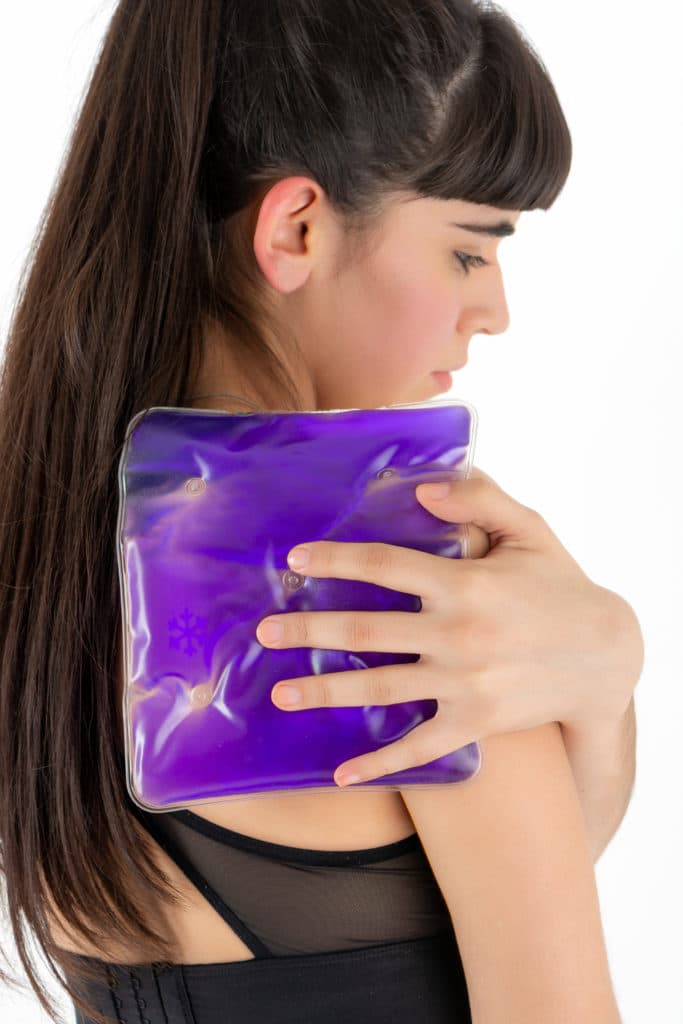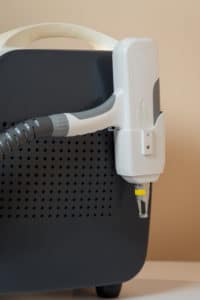Laser Tattoo Removal Numbing Cream
 Getting a tattoo can be painful, but laser tattoo removal can hurt much worse! This is the vast majority of tattoo removal clinicians use a topical numbing cream or some other form of skin numbing on their patients prior to treatment sessions. Offering patients a solution that reduces pain during the procedure may give them the confidence necessary to schedule their appointment and will certainly ensure the experience is more comfortable overall.
Getting a tattoo can be painful, but laser tattoo removal can hurt much worse! This is the vast majority of tattoo removal clinicians use a topical numbing cream or some other form of skin numbing on their patients prior to treatment sessions. Offering patients a solution that reduces pain during the procedure may give them the confidence necessary to schedule their appointment and will certainly ensure the experience is more comfortable overall.
There are a handful of options that laser tattoo removal providers can offer to their patients to manage comfort levels, including ice packs, numbing creams, injectable anesthetics, and cold air machines. Lidocaine injections may be appropriate for those with the lowest pain tolerance. However topical numbing creams will usually work just fine.
Numbing creams – such as EMLA, NeuroMed Topical Anesthetics or compounded BLT (legally obtainable by prescription on a per patient basis) – often include benzocaine, lidocaine, prilocaine, or tetracaine in varying concentrations as active ingredients. These topical anesthetic creams may be among the best skin numbing creams for laser tattoo removal procedures options.
The main problem with many numbing creams on the market is that they require time to take effect. Many numbing creams need to be applied at least 30 to 45 minutes in advance of the treatment. For this reason, most practitioners encourage patients to apply the cream at home before their appointment. A small number of topical anesthetics contain delivery systems that allow for more rapid onset as well as extended duration. Benzocaine has the shortest onset and duration, lidocaine a longer duration with a somewhat longer onset and tetracaine the longest duration of the three.
Ice Packs for Laser Tattoo Removal

Ice packs are a short-term option for clinics that perform a low-to-moderate volume of laser tattoo removal treatments daily. Easy and cost-efficient, ice packs can work for numbing the skin. Within five or ten minutes of application, the patients’ skin will be adequately numbed to significantly improve the tattoo removal treatment experience.
Some of the downsides to using ice packs for skin numbing during laser tattoo removal is that there is a lower perceived value relative to other treatment methods. Additionally, it can be a hassle to keep ice packs cold if there is a larger volume of patients. Also, ice packs cannot numb the skin during the treatment – only before and after.
Overall, ice packs are an inexpensive and convenient option for low volume and clinics just starting these procedures. Efficacy is short-term, however, and may not be adequate for the latter portion of the procedure.
How Laser Tattoo Removal Works
Lasers remove tattoos by breaking up the pigment colors with a high-intensity light beam. Black tattoo pigment absorbs all laser wavelengths, making it the easiest color to treat. Other colors can only be treated by selected lasers based upon the pigment color. Certain tattoo pigments, such as yellows, greens and fluorescent inks are more challenging to treat than darker blacks and blues. The reason why these pigments are more challenging is because they have absorption spectra that fall outside or on the edge of the emission spectra available in the laser tattoo removal device being used. Recent pastel colored inks contain high concentrations of titanium dioxide which is highly reflective. Consequently, such inks are difficult to remove using current laser tattoo removal techniques since they reflect a significant amount of the incident light energy out of the skin.
Lasers Used for Tattoo Removal
Laser tattoo removal was performed with continuous-wave lasers initially, and later with Q-switched lasers, which became commercially available in the early 1990s. Today, “laser tattoo removal” usually refers to the non-invasive removal of tattoo pigments using Q-switched lasers. Typically, black and other darker-colored inks can be removed completely.
Continuous wave lasers are those lasers that emit a beam whose output power is constant over time. Such a laser is known as continuous wave (CW). Many types of lasers can be made to operate in continuous wave mode to satisfy such an application. Many of these lasers actually lase in several longitudinal modes at the same time, and beats between the slightly different optical frequencies of those oscillations will in fact produce amplitude variations on time scales shorter than the round-trip time (the reciprocal of the frequency spacing between modes), typically a few nanoseconds or less. In most cases these lasers are still termed “continuous wave” as their output power is steady when averaged over any longer time periods, with the very high frequency power variations having little or no impact in the intended application. This was the first type of laser used in laser tattoo removal.
Q-switch Lasers are those lasers that produce a pulsed output beam. The technique allows the production of light pulses with extremely high energy, much higher than would be produced by the same laser if it were operating in a continuous wave (constant output) mode. Compared to modelocking, another type of pulse generation with lasers, Q-switching leads to much lower pulse repetition rates, much higher pulse energies, and much longer pulse duration. The two techniques are sometimes applied together. This is the most common, current technique used for laser tattoo removal.


